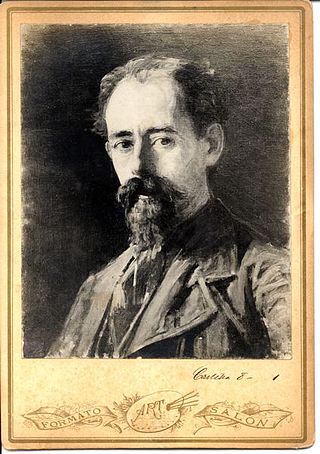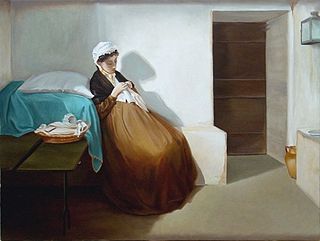Related Research Articles

Ferdinand I was the King of the Two Sicilies from 1816, after his restoration following victory in the Napoleonic Wars. Before that he had been, since 1759, Ferdinand IV of the Kingdom of Naples and Ferdinand III of the Kingdom of Sicily. He was deposed twice from the throne of Naples: once by the revolutionary Parthenopean Republic for six months in 1799 and again by Napoleon in 1805, before being restored in 1815.

The Parthenopean Republic or Neapolitan Republic was a short-lived, semi-autonomous republic located within the Kingdom of Naples and supported by the French First Republic. The republic emerged during the French Revolutionary Wars after King Ferdinand IV fled before advancing French troops. The republic existed from 21 January to 13 June 1799, collapsing when Ferdinand returned to restore monarchial authority and forcibly subdued republican activities.

Hans Ruesch was a Swiss racing driver, a novelist, and an internationally prominent activist against animal experiments and vivisection. Ruesch has been described as a pioneer of the anti-vivisection movement.

Ferdinando Sanfelice was an Italian late Baroque architect and painter.

James Vincent Sheean was an American journalist and novelist.

Paolo Taviani and Vittorio Taviani, collectively referred to as the Taviani brothers, were Italian film directors and screenwriters who collaborated on numerous film productions.

Renzo Rossellini was an Italian composer, best known for his film scores.

Laura Solari was an Italian film actress.

Emma Hamilton is a 1968 historical drama film directed by Christian-Jaque and starring Michèle Mercier, Richard Johnson and John Mills. It was partly based on the 1864 novel La Sanfelice by Alexandre Dumas and depicts the love affair between Emma Hamilton and Horatio Nelson. It was a co-production between Italy, West Germany, France and the United States.

Lady Hamilton is a 1921 German silent historical film directed by Richard Oswald and starring Liane Haid, Conrad Veidt and Werner Krauss. The film depicts the love affair between the British Admiral Lord Nelson and Lady Emma Hamilton. It was based on two novels by Heinrich Vollrath Schumacher. A copy of the film exists in a Russian film archive.

Maria Antonietta Macciocchi was an Italian journalist, writer, feminist and politician, elected to the Italian Parliament in 1968 as an Italian Communist Party candidate and to the European Parliament in 1979 as a candidate of the Radical Party.
Luisa Sanfelice is a 2004 Italian historical film directed by Paolo and Vittorio Taviani. It stars Laetitia Casta and was co-produced between Italy and France. It is an adaptation of a book by Alexandre Dumas.

An Adventure of Salvator Rosa is a 1939 Italian historical adventure film directed by Alessandro Blasetti and starring Gino Cervi, Luisa Ferida and Rina Morelli. It is set in seventeenth century Naples, then occupied by Spain, where a famous artist celebrated for his paintings of the rich leads a double life as a secret defender of the poor and oppressed.

Gioacchino Toma was an Italian art instructor and painter, noted primarily for historic, realistic and genre subjects in a Romantic style.
Fernando Tropea was a prolific Italian film editor, who worked on around ninety films during his twenty-year career. During the Fascist era he worked on films such as Naples of Former Days (1938) and Carmen fra i rossi (1939).
Leo Menardi (1903–1954) was an Italian screenwriter, producer and film director. He also worked as editor and assistant director on The Song of Love (1930), the first Italian sound film. In 1942 he wrote and directed Luisa Sanfelice.
Luisa Sanfelice is a 1942 Italian historical drama film directed by Leo Menardi and starring Laura Solari, Massimo Serato and Osvaldo Valenti. The film is an adaptation of a novel by Alexandre Dumas based on the story of Luisa Sanfelice (1764-1800) an Italian aristocrat executed in Naples by Ferdinand I for supporting a Republican attempt to overthrow him during the French Revolutionary Wars. Horatio Nelson and Lady Hamilton both feature prominently.

Luisa or Luigia Sanfelice (1764–1800) was an Italian aristocrat who was executed by Ferdinand I of the Two Sicilies because of her involvement with the French-backed Parthenopean Republic during the French Revolutionary Wars, although Sanfelice was largely apolitical. As she was generally regarded as the innocent victim of circumstances, she became a legendary figure who was widely portrayed in popular culture. During the nineteenth century she was often depicted as a gentle and naïve beauty whose story closely resembled that of the fictional Fioria Tosca,the heroine of the Puccini opera Tosca.
Luisa Sanfelice (1764-1800) was an Italian aristocrat.
This is a list of Italian television related events from 2004.
References
- ↑ Maxwell p.275